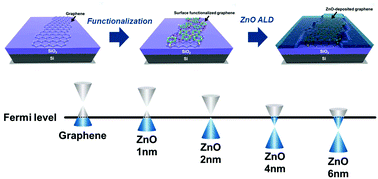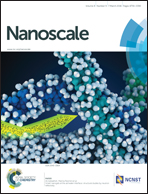A non-destructive n-doping method for graphene with precise control of electronic properties via atomic layer deposition†
Abstract
Graphene applications require high precision control of the Fermi level and carrier concentration via a nondestructive doping method. Here, we develop an effective n-doping technique using atomic layer deposition (ALD) of ZnO thin films on graphene through a reactive molecular layer. This ALD doping method is nondestructive, simple, and precise. The ZnO thin films on graphene are uniform, conformal, of good quality with a low density of pinholes, and finely tunable in thickness with 1 Å resolution. We demonstrate graphene transistor control in terms of the Dirac point, carrier density, and doping state as a function of the ZnO thickness. Moreover, ZnO functions as an effective thin-film barrier against air-borne water and oxygen on the graphene, resulting in extraordinary stability in air for graphene devices. ZnO ALD was also applied to other two-dimensional materials including MoS2 and WSe2, which substantially enhanced electron mobility.


 Please wait while we load your content...
Please wait while we load your content...